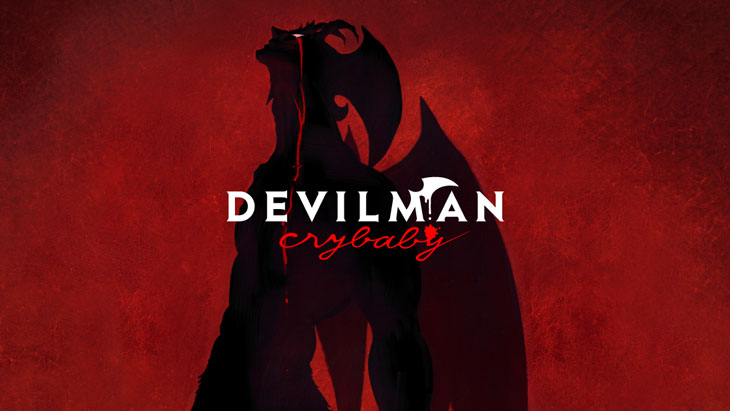
I have put this off for months. Ever since my initial disappointment with the series when I finished watching it, the critical praise and fan acclaim for this garbage heap just kept eating away at me. I have so much to say about this incoherent, badly executed, edge lord trash heap that I was not sure that I wanted to write it down because it might turn into a Fant4stic level rant. Ultimately, after a few months of much better anime, I think I can say this out loud. Netflix’s Devilman Crybaby is one of the most disappointing, frustratingly awful anime I have seen in a long time. Many of the reasons for that are because… it did not have to be this way. I will explain what I mean.
SPOILERS FOR A GARBAGE FIRE OF AN ANIME
The story focuses on a wimpy, crappy high school track team member named Akira who everyone calls a crybaby because of his tendency to burst into tears whenever something remotely sad happens. His parents are always abroad so he stays with the family of his childhood friend, Miki. One day, after school, another old friend of Akira, a teenage university professor named Ryo, shows up and saves Akira from random beat boxing by spraying bullets at them. He tells Akira that demons are real and whisks him away to the most insane rave party anyone has ever seen in order to find proof. The party goes nuts when Ryo decides to start stabbing people. The bloodshed causes demons to appear and start possessing people and eating others. One of these demons, Amon, possesses Akira but does not gain full control over him. Akira’s mind and soul with the body of one of the most powerful demons in existence creates Devilman, a fiendish superhero to confront demons and save people. Unfortunately, Ryo has ulterior motives, and Akira might become a true demon himself if Ryo’s crusade against demons on Earth goes how he wishes. Stupidity ensues.
From the very beginning, I was wary of this adaptation. The original Devilman manga that was created by Go Nagai in the late 1960s could very well be considered one of the progenitors of edge lord misanthropic anime content. It was cruel, violent, misanthropic, and most importantly, BORING. No matter how many weird demon creations from Nagai’s insane mind get torn apart by Devilman, you cannot escape the fact that a long running story with almost nothing but unlikable assholes, except for the people who are set up to be murdered, who can get very monotonous and dull. This was made apparent the last time the series was adapted into an OVA (original video animation) in the mid-1990s. The same thing happened: ultraviolent, misanthropic content that was tedious and boring to watch.
The one big thing that made me even remotely consider the possibility that another adaptation of this to celebrate Nagai’s 50th anniversary was who they got to direct the series. Masaaki Yuwasa got his start on Crayon Shin-chan, of all things, but is now more known for insanely original bizarre series like Ping Pong: The Animation. Yuwasa’s kinectic direction, bizarre animation style and color choices, and unique, impossible to imitate aesthetic seemed like an ideal way to correct for the inherent problems of the source material. At first, it seemed to be working. Yuwasa’s unique aesthetic and lurid, weird color choices make for some unique, fascinating imagery. Particularly during the rave in episode one, you are constantly in awe of what your seeing and do not even know what to look at because so much is happening at once. He even manages to overcome some of the more stupid, misanthropic moments of the original series with a healthy dose of weird humor, frenetic physical comedy, and strong characterization. You really get a sense of who Akira and Ryo are as people, and why they would be friends with each other. In the first three or four episodes, everything seemed to be going well. It did not last.
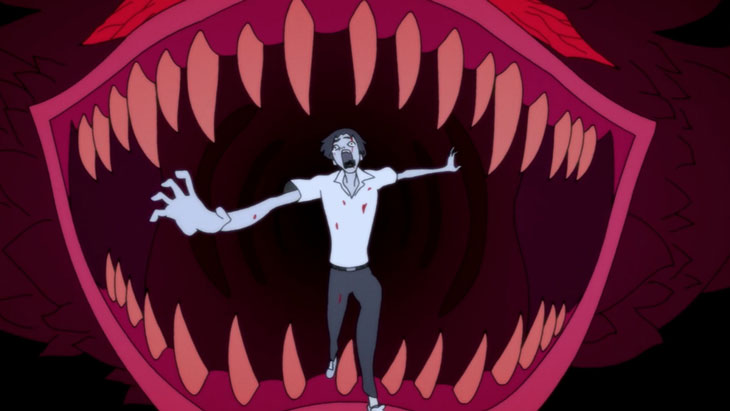
Ultimately, not only does Yuwasa’s style and script choices not save this adaptation, they actually make it worse. Yuwasa’s kinetic direction is useful for action scenes, but it also highlights that he leaves almost no budget for animation on more normal material. There are plenty of, quite frankly, embarrassing moments where the characters on screen look like stick figures, or the series attempts to hide its animation shortcomings with poorly integrated loops of a few screenshots. Also, Yuwasa’s kinetic action direction only works if we remotely care about how or why what is happening on screen is happening. Yuwasa often does not care enough to build up to it effectively.
The biggest failures of the series are all in the plot and characters. There are many moments that feel like they should lead to big conflicts between the main characters that are either addressed so flimsily that it does not feel organic or are simply never mentioned again. One of the biggest moments from the original series, the death of Akira’s mother, is given a gruesome twist in that Akira’s father becomes the turtle demon that eats the mother. This moment of horror is never addressed again after the episode in which it occurs. In terms of conflicts between the two main characters, Ryo plans to execute Miki, Akira’s childhood friend, in front of him because he says she cannot be trusted. Akira refuses to let it happen, the issue is dropped, and neither speak of this potentially murderous difference of perspectives ever again after the episode where it occurs. The fact that Ryo exposes the fact that demons exist to the world is one of the key turning points in the plot, and Akira thinks that doing this might be a bad idea, but he never questions Ryo’s motives for doing any of this until near the end of the series.
All of these differences of opinion feel like they should lead to some sort of lasting conflict between the two main characters, but they never do. It is likely because the various beats of the plot here would lead to a conflict in well written story, but Crybaby refuses to have any conflict until Ryo reveals that he, the guy doing lots of evil stuff, bringing humanity closer to extinction, and going on television to tell people to kill each other, is Satan (I said spoilers). This plot twist is so obvious that it was accidentally revealed in the series opening sequence that plays before each episode and no one cared. However, because the series is structured around you being invested in the plot twist, it has to constantly contrive reasons for their not to be any lasting conflict between the two main characters until Ryo’s ultimate betrayal.
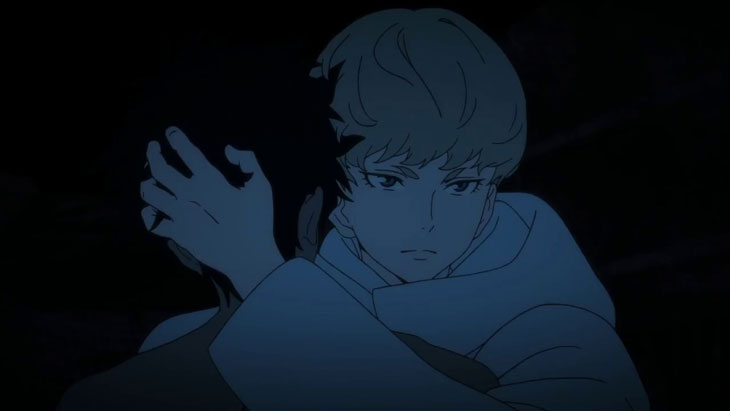
Also, the fact that Ryo is Satan is one of the worst plot elements of the entire show. At roughly the halfway point of the series, Ryo starts to ask himself why he is doing all of these things that could be considered evil and destructive. Apparently it is revealed that he was a mindwiped Satan who was hypnotized into acting out Satan’s plan by one of his followers. The idea was for him to carry out Satan’s wishes, and when he starts to question why he is doing all of this, he will seek answers and find out he is Satan and then continue on with the plan he is already doing. This plot is convoluted, stupid, and designed to rob Ryo of any sort of moral compass which might inform his character’s actions prior to that point. Of course a guy who claims to be trying to save the world would spread demons, execute people, and order humans to kill each other. HE WAS SATAN ALL ALONG!! Apparently, this plot twist was in Nagai’s original story as well, but it still stinks of a retcon to explain away bad, inconsistent writing.
Even with all that terrible baggage and all of the bad decisions brought over from Nagai’s original story, this might still have been salvaged if it were better executed. Sadly, Yuwasa’s execution of the story manages to rob the original material of some of its strongest content by simply refusing to invest you in any of it. The death of Akira’s mother feels like an afterthought in the context of the whole series, particularly when it is followed by an adaptation of one of the more famous battles from the original series between Devilman and two demon lovers fused together (Don’t worry. They don’t matter after that episode either). Yuwasa keeps suggesting that the story does not have to be an edge lord, misanthropic gore fest with apocalyptic ambitions by having Miki suggest alternate ideas or having characters choose their better instincts at moments when they could have chosen their worst. These moments ultimately do not matter though because the characters who express these opinions are quickly killed, maimed, or proven wrong. Yet somehow these opinions play into the climax where a whole bunch of people who we have never met before band together to help Akira fight Satan and his demon army. The final episode is one gigantic climax battle and yet I have so little investment that by the end of the episode I wanted to throw things at the screen for suggesting that this limp, meaningless was in any way tragic or heartfelt.
A big reason why most of the “emotional” content in the series does not work is that the pacing for the series is horrendous. Yuwasa jumps from moment to moment so fast that absolutely nothing has any weight or meaning and just becomes meaningless plot details between the gore and action scenes. Miki’s brother starts becoming a demon and her mom takes him to try to find help. He eats her ten minutes later. Miki’s dad goes looking for his son and wife. He’s gunned down by police hunting demons in the same episode. Miki starts a Twitter trend to suggest that the devil people are not monsters and can be good people. She gets stabbed through the spine and beheaded fifteen minutes later. By the time we get to the last episode, the only characters that meant anything to me who were still alive were Akira and Satan/Ryo. Also, whatever tragedy of Miki’s death that could have been there is somewhat undercut by the scene where you see Akira as Devilman driving down the road on a motorcycle carrying Miki’s head in his armpit. Tonal whiplash would break its own neck attempting to explain the thought process behind that progression.
There are also plenty of things that Yuwasa added to the story that just make you scratch your head and ask, “Why?” For no adequately explained reason, there are several long beatbox rapping scenes sprinkled throughout the series. Most of them have nothing to do with anything, and only one kind of discusses the plot that is progressing. Weirder still, the rappers in question are given significant characterization and screen time even though they ultimately add nothing to the story. All of them are unceremoniously killed off off-screen before Miki’s beheading.
Even more confusingly, the series is rather meta. To add further confusion to the narrative, it turns out that the original 1973 Devilman TV series was a thing in the current series’ universe. A flashback even suggests that Ryo was inspired by the idea of Devilman when he thought to fuse Akira with Amon. The original series’ theme music is playing over an action scene in one of the early episodes, and Miki’s little brother keeps Googling Devilman for no adequately explained reason. You would think this level of metanarrative awareness would have some sort of bearing on the story, but it doesn’t. It is just another meaningless distraction to pad out the run time. Yes, a series with only 10 episodes that rushes madly from plot point to plot point has padding in it. WHY IS ANY OF THIS HERE?!

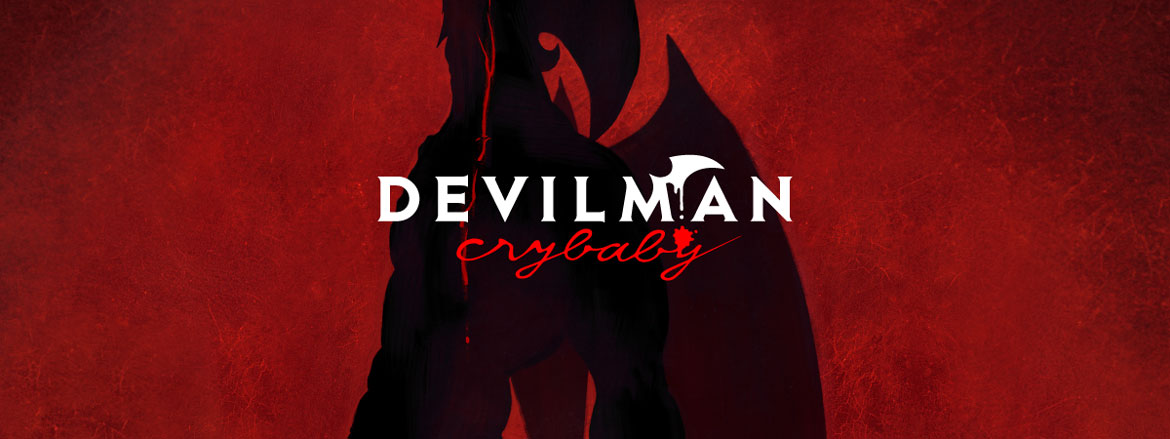
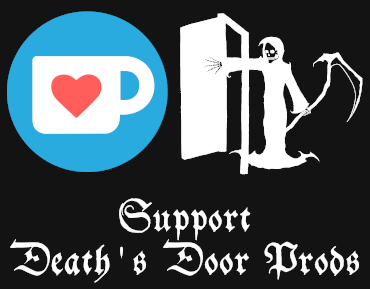

Add comment